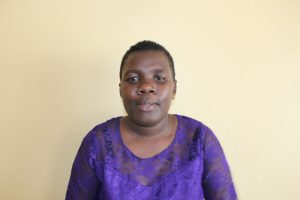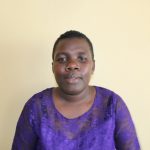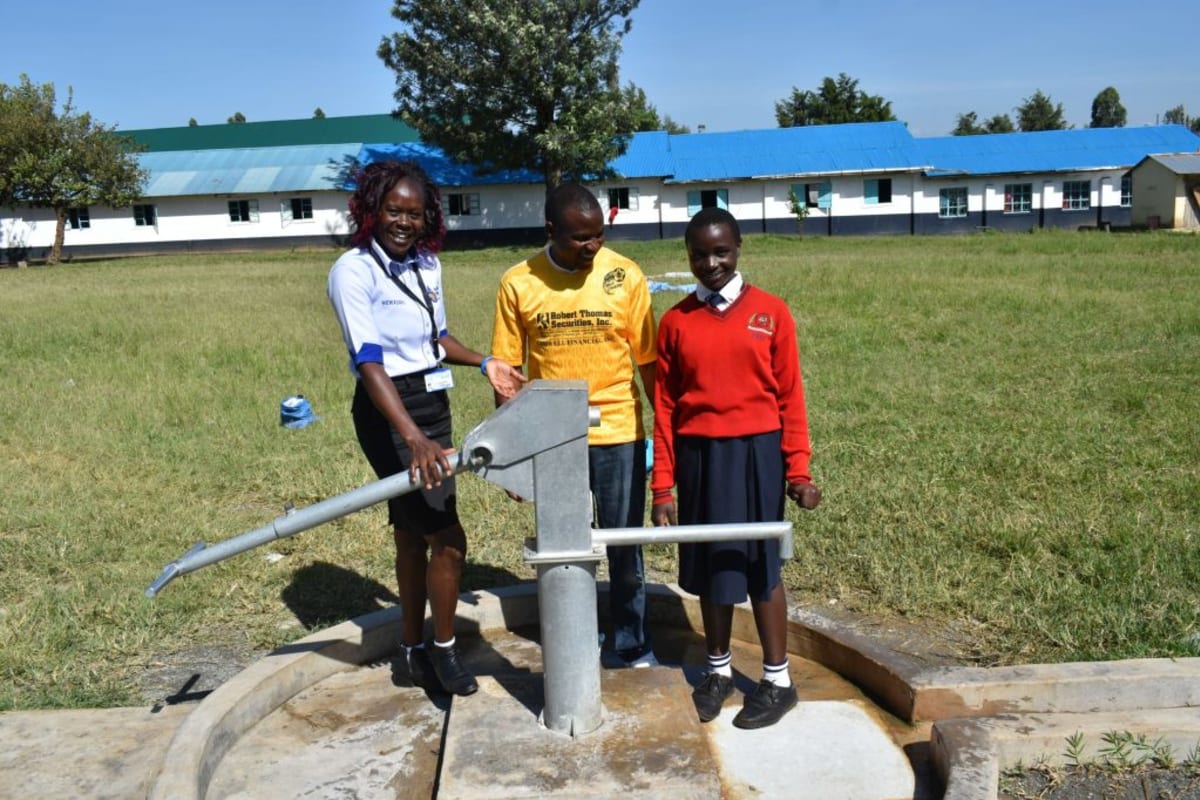The 452 students and 13 staff of Kipsigor Primary School all rely on one 5,000-liter rain tank to meet all their drinking, cooking, and cleaning needs. Even if the tank were to magically fill up each morning, it would still not be enough to sustain the school community. But the tank is hardly ever full, and there is never enough water.
So students must fetch water from outside school grounds. They are forced to choose when they should sacrifice some of their free time to supply the school with water: before school, which means they will miss morning prep and potentially be late to class, or during lunch, which means they won't get any sort of break throughout the day.

"When there is no water at the school, we are forced to go downstream to fetch water," said 13-year-old student, Valentine Y., shown filling her water container in the photo above. "[The stream] is located a mile away from the school. This is tiresome and, at the same time, consumes our study time."
But time is not the only cost of this water crisis. Although the water from the school's rain tank has never been treated, it is arguably better than the visibly dirty water from the nearby stream, which often infects students and staff with water-related illnesses.

"During [the] dry season, we suffer a lot," said 38-year-old teacher Osoro Jared, shown in the photo above supervising some students as they fill their jerrycans. "[The] downstream water is too dirty, and because we don't have a choice, students [drink] that water like that. Then they get sick and miss school for even a week."
Adequate water on school grounds will not only improve students health and keep them in class, but it will give them a cleaner learning environment in which to learn.
What We Can Do:
New Well
We conducted a hydrogeological survey at this school and the results indicated the water table beneath it is an ideal candidate for a borehole well. Due to a borehole well's unique ability to tap into a safe, year-round water column, it will be poised to serve all of the water needs for this school's large population, even through the dry months.
The school will help collect the needed construction materials such as sand, rocks, and water for mixing cement. They will also provide housing and meals for the work team, in addition to providing local laborers. We will complement their materials by providing an expert team of artisans and drilling professionals, tools, hardware, and the hand-pump. Once finished, water from the well will then be used by the school’s students and staff for drinking, handwashing, cooking, cleaning, and much more.
Handwashing Stations
There is currently nowhere for students to wash their hands after using the latrines or before eating lunch, let alone the water to do so.
The student health club will oversee the two new handwashing stations we will provide, and make sure they are kept clean and in working condition. The club leaders will fill the handwashing stations with water daily and make sure they are always supplied with a cleaning agent such as soap or ash.
VIP Latrines
We will construct two triple-door latrine blocks using local materials that the school will help gather. Three doors will serve the girls and three doors will serve the boys. All of these new latrines will have cement floors that are designed to be easy to use and to clean. And with a borehole right on school property, there should be enough water to keep them clean.
Training on Health, Hygiene, COVID-19, and More
We will hold a one-day intensive training session with students, teachers, and parents. This training will cover a wide range of topics including COVID-19 symptoms, transmission routes, and prevention; personal and environmental hygiene; and the operation and maintenance of the borehole, latrines, and handwashing stations. There will be a special emphasis on handwashing.
Our team of facilitators will use a variety of methods to train, including participatory hygiene and sanitation transformation, and asset-based community development. We will initiate a student health club, which will prepare students to lead other pupils into healthy habits at school and at home. We will also lead lectures, group discussions, and provide illustrative handouts to teach health topics and ways to promote good hygiene practices within the school including handwashing and water treatment. We will then conduct a series of follow-up trainings before transitioning to our regularly scheduled support visits throughout the year.
We and the school strongly believe that all of these components will work together to improve standards at this school, which will help lead to better student academic performance and will help unlock the opportunity for these students to live better, healthier lives.

 Borehole Well and Hand Pump
Borehole Well and Hand Pump
 Rehabilitation Project
Rehabilitation Project






































